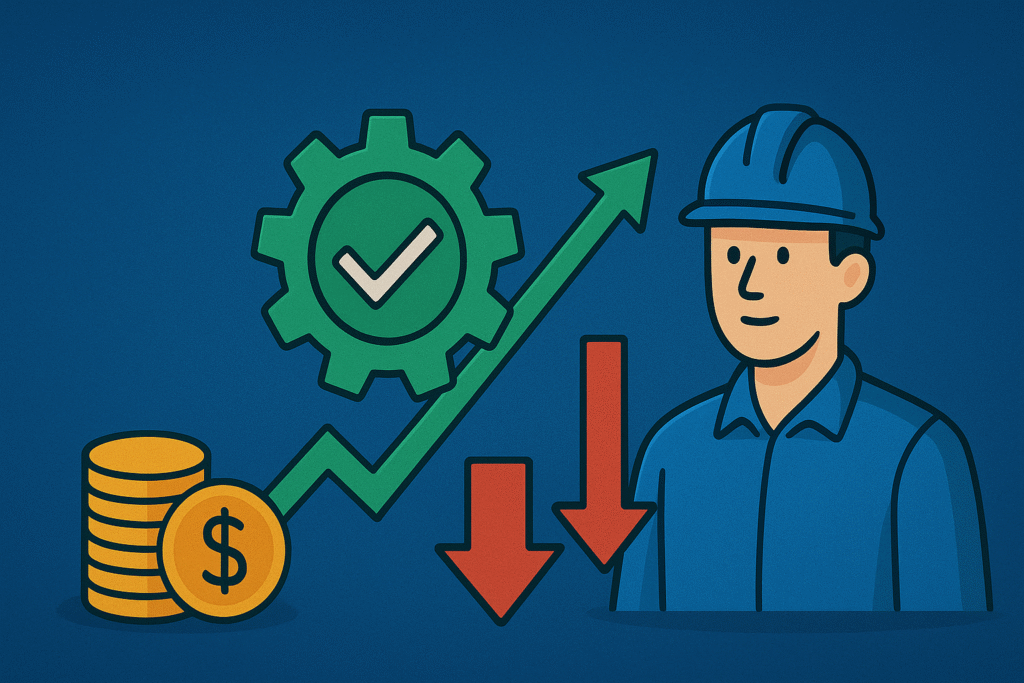
In any industrial operation, efficiency is the name of the game. Every minute of uptime translates to productivity and revenue, while every moment of downtime represents lost opportunities and escalating costs. One of the most effective yet often overlooked strategies for maximizing uptime is investing in high-quality components. From the smallest valve to the largest piece of machinery, the quality of each part plays a crucial role in the overall reliability and performance of your system.
This article will explore the direct link between component quality, operational downtime, and overall costs. We will break down how superior parts contribute to a more robust and cost-effective operation, helping you understand why the initial investment in quality is one of the smartest financial decisions a business can make. By the end, you’ll have a clear picture of how prioritizing quality components can safeguard your productivity and boost your bottom line.
The Hidden Costs of Inferior Components
Choosing cheaper, lower-quality components might seem like a good way to cut initial expenses, but this approach often leads to significant long-term costs. Inferior parts are the primary culprits behind unexpected equipment failures, which trigger a cascade of expensive consequences.
When a low-quality component fails, the entire production line can grind to a halt. This unplanned downtime is far more than a minor inconvenience; it’s a direct hit to your revenue. For every hour the line is down, you’re not producing, not selling, and not meeting customer demand.
Beyond lost production, there are other costs to consider:
- Emergency Repairs: Unscheduled repairs are almost always more expensive than planned maintenance. You’ll likely pay premium rates for labor, especially if it’s after hours or on a weekend. Expedited shipping for replacement parts also adds to the bill.
- Labor Inefficiency: When equipment fails, your workforce is left idle. You’re paying employees who are unable to perform their jobs, which erodes labor productivity and inflates operational costs.
- Reputation Damage: Frequent downtime can lead to missed deadlines and unfulfilled orders. This unreliability can damage your relationship with customers, who may turn to more dependable suppliers.
These hidden expenses can quickly dwarf the initial savings from purchasing cheaper parts. A single major failure caused by a substandard component can easily cost a company tens of thousands of dollars, making the upfront “savings” entirely meaningless.
The Long-Term Value of High-Quality Components
Investing in high-quality components is a proactive strategy for building a resilient and efficient operation. Superior parts are engineered for durability and reliability, offering a range of benefits that directly contribute to reducing downtime and lowering long-term costs.
Enhanced Durability and Longevity
High-quality components are manufactured from superior materials and engineered to withstand the demanding conditions of industrial environments. They are designed to tolerate high pressure, extreme temperatures, and constant use without premature wear or failure. This inherent durability means they last longer and perform more reliably, reducing the frequency of replacements. When you use robust parts, like top-grade industrial pipe fittings in Utah, you build a system that is fundamentally more stable and less prone to unexpected breakdowns.
Reduced Maintenance Requirements
Because they are less likely to fail, high-quality components require less frequent maintenance and fewer repairs. This translates directly to lower maintenance costs, both in terms of labor and replacement parts. It also means your maintenance teams can focus on preventative tasks rather than constantly reacting to emergencies. A well-maintained system running on quality parts allows for a predictable and manageable maintenance schedule, minimizing disruptions to your production flow.
Improved System Efficiency
The quality of individual components has a significant impact on the overall efficiency of your entire system. For example, well-designed pipes and fittings ensure optimal flow rates and minimize energy loss, while high-performance valves provide precise control, preventing leaks and waste. Each component working at its best contributes to a more efficient system, which can lead to lower energy consumption and reduced operational costs over time. This synergy of quality parts creates a system that not only runs reliably but also operates at its peak performance.
Greater Safety and Compliance
In many industries, component failure can pose serious safety risks to employees and the environment. High-quality parts are designed and tested to meet stringent safety and regulatory standards. By investing in certified, reliable components, you create a safer working environment and reduce the risk of costly compliance violations or accidents. This commitment to safety protects your most valuable asset—your people—and safeguards your business against potential legal and financial liabilities.
Making the Switch to Quality-First Procurement
Transitioning to a procurement strategy that prioritizes quality over initial cost is a critical step toward long-term operational excellence. It requires a shift in mindset from short-term savings to long-term value.
Start by evaluating your current suppliers and the performance of the components they provide. Track failure rates and associated downtime costs to identify which parts are causing the most problems. This data will provide a clear business case for investing in higher-quality alternatives.
When selecting new suppliers, look for those with a proven track record of quality and reliability. Don’t be afraid to ask for material certifications, performance data, and customer testimonials. A reputable supplier will be transparent about their manufacturing processes and stand behind their products with solid warranties. By forming partnerships with trusted suppliers, you can ensure a consistent supply of high-quality industrial pipe fittings in Utah and other essential components that will support your long-term goals.
Build a More Resilient Operation
Ultimately, the choice between low-cost and high-quality components is a choice between short-term savings and long-term stability. While cheaper parts may seem appealing at first, the hidden costs of downtime, emergency repairs, and lost productivity make them a poor investment. By prioritizing high-quality components, you build a more resilient, efficient, and profitable operation. This quality-first approach not only minimizes unexpected disruptions but also lays the foundation for sustainable growth and a stronger competitive edge.











